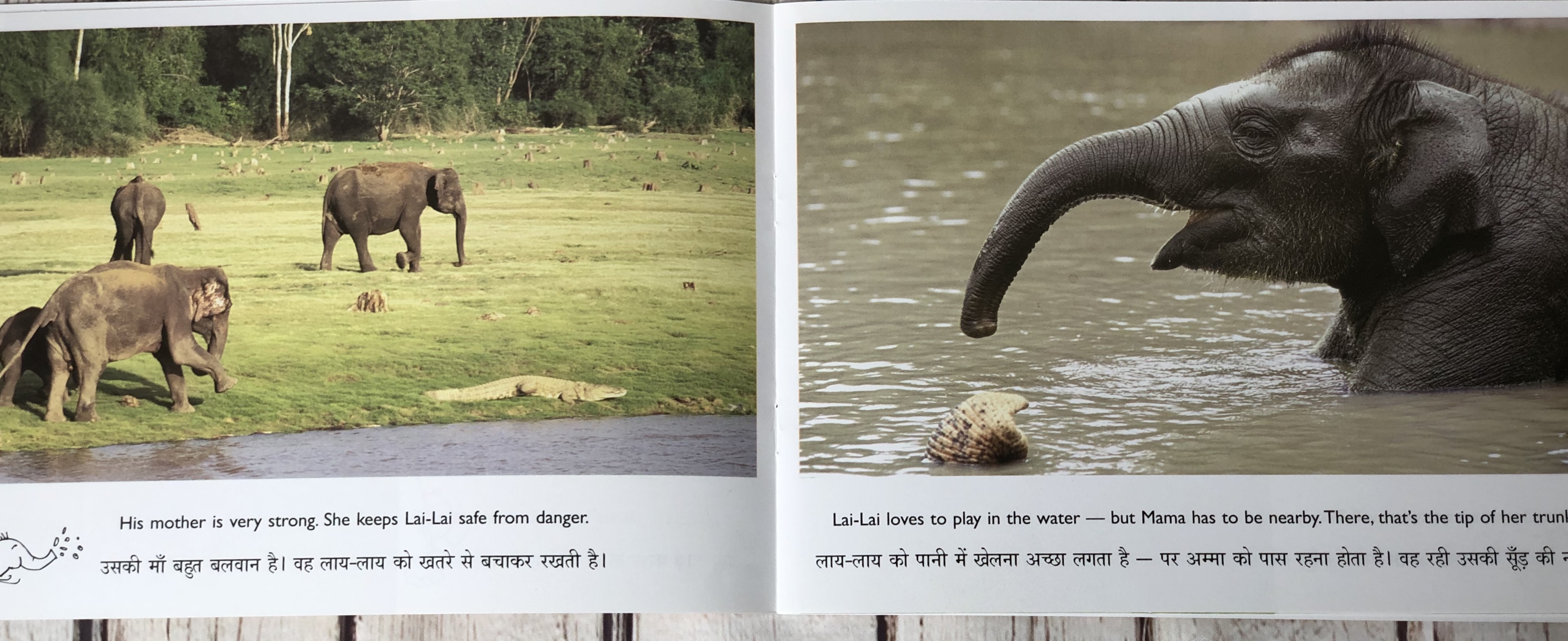Don't miss this filmmaker's book on an elephant's disappearing world
With beautiful photographs and a lovely tale that also tells us about deforestation, Lai Lai the Baby Elephant is a bilingual picture book written by the famous wildlife filmmaker, Shekar Dattari.
I have lived in India all of my childhood. I have seen many elephants in temples. I have been close enough to touch and feed them. Recently I went to a zoo and happened to make it to the elephant arena right in time for the feeding session. The elephants were swimming in a neck-deep pond with wide-open mouth catching the chunks of vegetables directed at them. I looked at them and said -"Whaaaat? Do elephants have teeth just like us?" I have never seen them from that angle, I confess. When I received Lai-Lai the Baby Elephant, I was more interested in reading the book than my kid!
Lai Lai The Baby Elephant from Tulika Books is penned by Shekar Dattatri. Shekar Dattatri is a wildlife filmmaker with a special fondness for elephants. He has spent a lot of time observing and filming them in the jungle. A beautiful English-Hindi bilingual book that explores the world of wild elephants through stunning photographs and informative text in English and in Hindi, with lovable elephant cartoons.
Like a time machine, this book takes us to view the life of Lai Lai from Day 1 to when he is more than 7 yrs of age. Lai Lai, the cheerful little elephant wanders forests of South India with his mother and aunts, who protect and guide him.
The book is full of cute pictures of the baby elephant, Lai Lai and they are heartwarming. It shows her family up close, to give the reader a feel of being one among the herd. I loved the work of photographers, Saravana Kumar, Anna Lockwood, and Shekar Dattatri. Pictures were captured from all angles and it felt like a NatGeo special edition of the elephants.
The book had an Indian map with locations of where elephants are found. We learned elephant facts and new Hindi words too. Yes, the book is bilingual (Hindi and English).
What I loved most about this book is that in just two photographs, it makes young minds feel the trouble encountered by elephants due to deforestation. For elephants to survive in the wild, there should be forests left for them and it's our responsibility to ensure that they are conserved.

